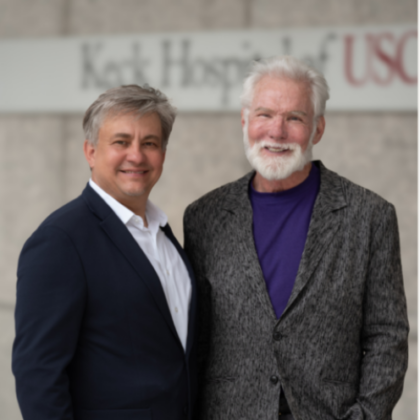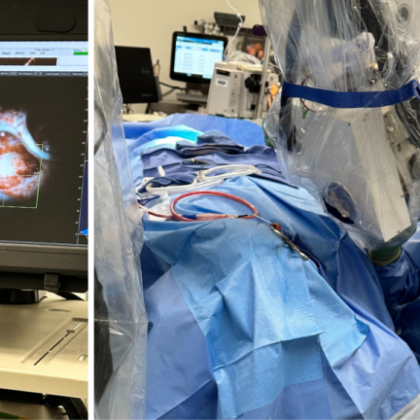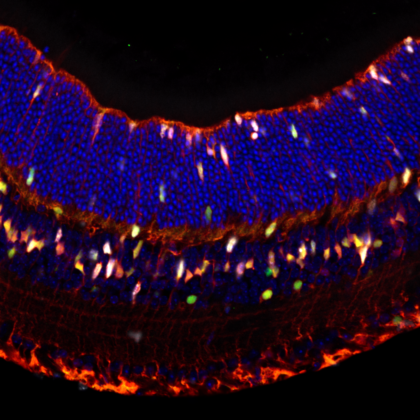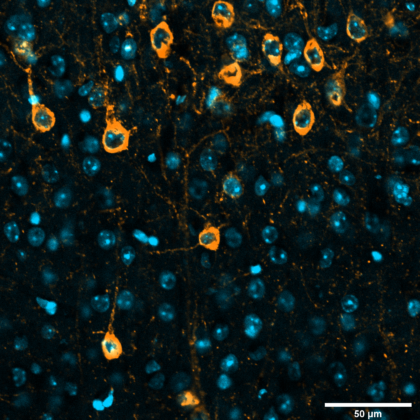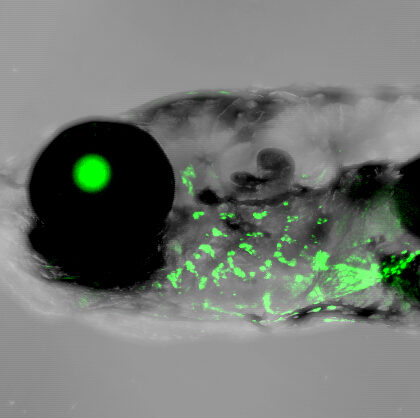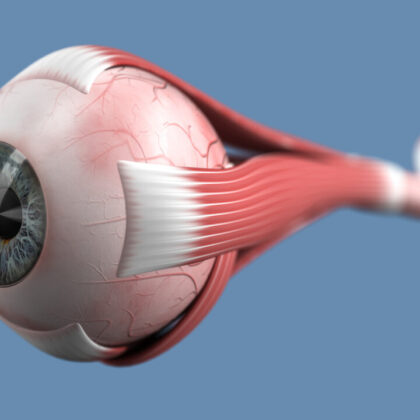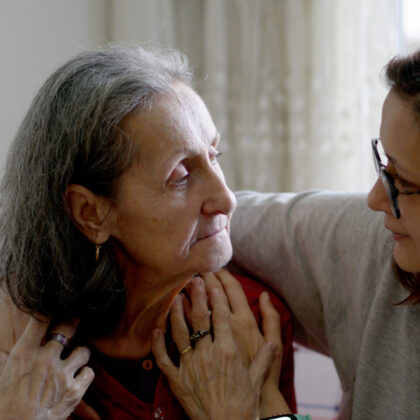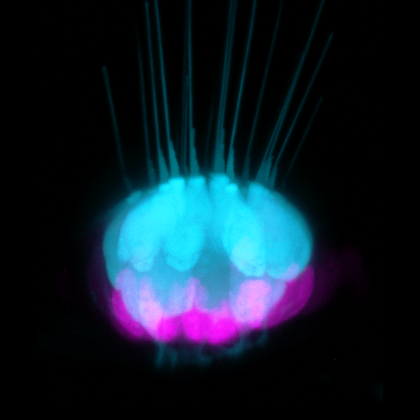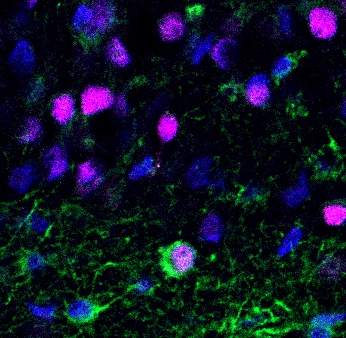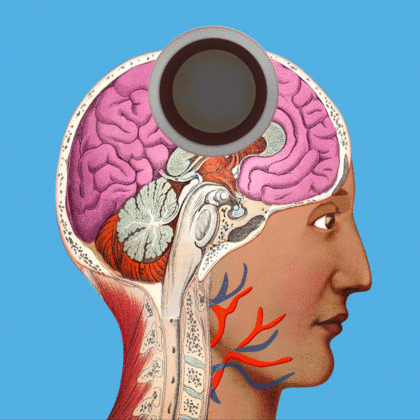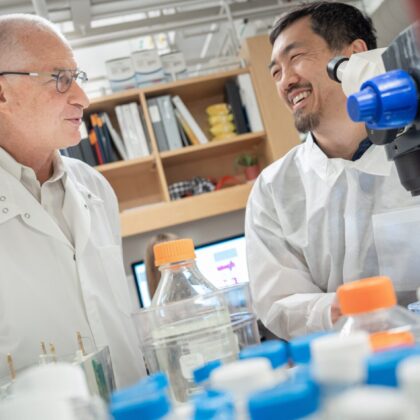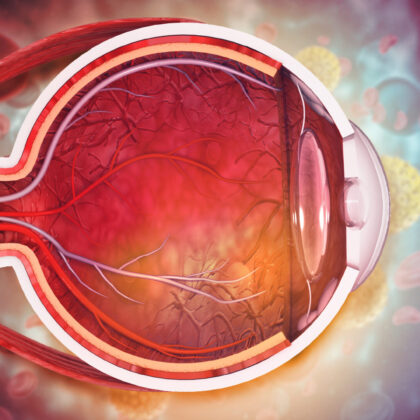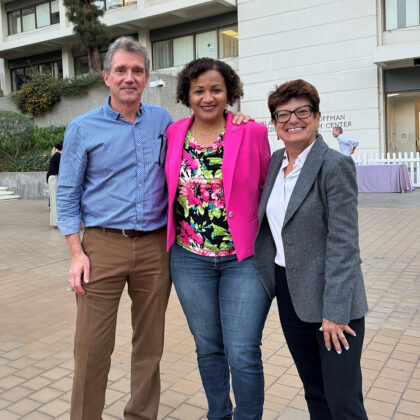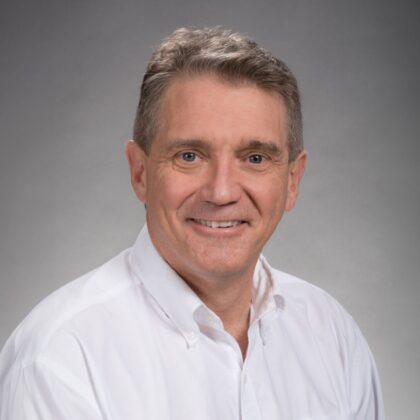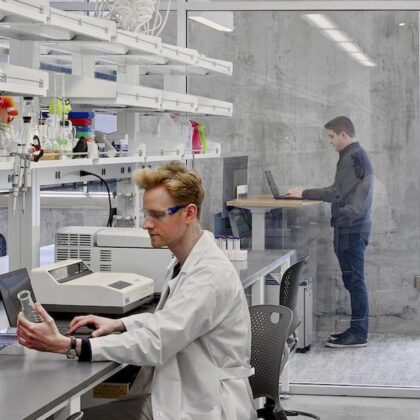R. Rex and Carrol Parris make $10 Million gift to launch USC Longevity Research Accelerator at Keck School of Medicine
Experts in engineering, gerontology and stem cell research will collaborate to find treatments for age-related conditions like osteoarthritis and cardiovascular disease. Keck School of Medicine of USC will launch a new research …
An innovative approach to hearing loss: John Oghalai receives R01 grant for OCT imaging of the human inner ear
Over 615,000 people in the United States alone are affected by Meniere’s disease, a problem of the inner ear that can lead to vertigo (dizziness) and hearing loss, and many more experience …
USC Stem Cell mouse study identifies shared genes involved in hearing and vision regeneration
The same genes could hold the key to regenerating cells in the ear and eye, according to a new mouse study from the USC Stem Cell laboratory of Ksenia Gnedeva, published in …
How to clear the toxic tau protein that can lead to Alzheimer’s and related diseases
USC Stem Cell scientists discover a new way to rid cells of toxic tau protein in a study involving mice and lab-grown human “mini-brains,” known as organoids. The neurotransmitter glutamate is essential …
Nerve fibers in the inner ear adjust sound levels and help compensate for hearing loss in mice, study finds
Researchers from the Keck School of Medicine of USC, in collaboration with Baylor College of Medicine in Houston, Texas, used an innovative imaging tool to examine the mouse inner ear and made …
Gerontology Dean Pinchas Cohen named senior member of the National Academy of Inventors
Cohen, an expert on mitochondrial microproteins and their therapeutic potential for diseases related to aging, holds several patents for novel peptides. Pinchas Cohen, Dean of the USC Leonard Davis School of Gerontology, …
An earful of gill: USC Stem Cell study points to the evolutionary origin of the mammalian outer ear
The outer ear is unique to mammals, but its evolutionary origin has remained a mystery. According to a new study published in Nature from the USC Stem Cell lab of Gage Crump, …
Up to $47 million award supports collaborative eye transplant research co-led by USC
An ambitious endeavor to restore sight unites the Keck School of Medicine of USC with the University of Colorado Anschutz Medical Campus and several other institutions from academia and beyond. A federal …
USC selected to receive $3.4 million award from ARPA-H’s Sprint for Women’s Health
The grant will fund Keck School of Medicine of USC research to test an innovative therapy to slow age-related cognitive decline. A team of researchers at The Keck School of Medicine of …
USC Stem Cell study breaks the silence on how fish and lizards regenerate hearing
A new USC Stem Cell study published in the Proceedings of the National Academy of Sciences (PNAS) has identified key gene regulators that enable some deafened animals—including fish and lizards—to naturally regenerate …
To remember conversations, keep making new brain cells
USC-led study of patients with epilepsy shows how making new neurons benefits cognition in adults. Why do adults make new brain cells? A new study published in Cell Stem Cell provides the …
Brilliant minds, healthy brains
USC brain researchers are finding novel ways to image, detect and treat diseases. This spring, scientists from the Keck School of Medicine of USC opened a new window into understanding the brain …
Turn back the clock on aging
There’s no way to stop the march of time, but innovative research by USC scholars points the way to a longer, healthier and more vibrant life. About 10 years ago, when George …
Cell by cell: Rebuilding the body
USC researchers are revolutionizing how we treat disease by harnessing stem cells as “living medicine.” Anyone who’s healed from a cut or a scrape has witnessed the incredible regenerative power of stem …
A powerhouse of innovation
How a serendipitous discovery led by Pinchas Cohen more than 20 years ago opened a new chapter in biology and made the USC Leonard Davis School a leading force in unraveling the …
$6 million grant drives potential treatment for common cause of vision loss toward the clinic
The California Institute for Regenerative Medicine (CIRM) has funded Keck School of Medicine of USC translational research advancing a therapy for dry age-related macular degeneration, one of the leading causes of blindness …
Turning memory loss into a distant memory
USC Viterbi and Keck School of Medicine of USC have been collaborating on human trials for a revolutionary brain prosthesis to repair and restore lost memories. Do you remember the details of …
Keck School of Medicine celebrates faculty achievements at annual awards ceremony
The 2024 Faculty Awards and Recognition Ceremony was a night of recognition and reflection as Dean Carolyn C. Meltzer, the Keck School Faculty Council and the Office of Faculty Affairs, Advancement, and …
USC Stem Cell welcomes new leader, renowned physician-scientist Chuck Murry
Charles (Chuck) Murry, MD, PhD, has been appointed as the next head of USC Stem Cell. In that capacity, he will be the chair of the Department of Stem Cell Biology and …
Forging research partnerships for future medical breakthroughs
New Mann Engineering in Medicine Pilot Grants program will build ongoing research collaborations between USC Viterbi School of Engineering and Keck School of Medicine of USC. The lifesaving medical discoveries and therapeutics …
